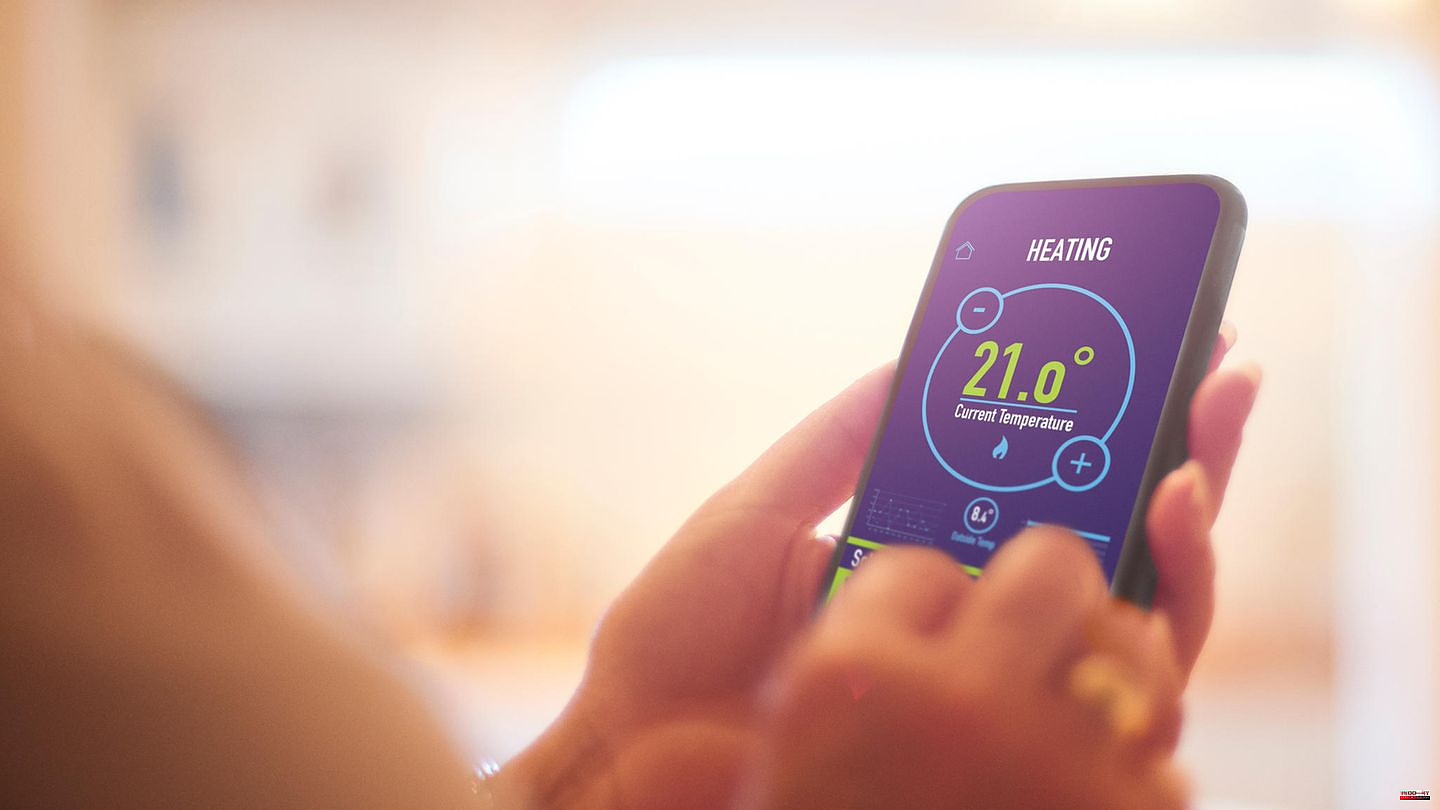If anything is going to skyrocket in 2022, it will be inflation and energy prices. There is no end of the price spiral in sight, which is pushing many consumers to look for savings. Smart thermostats could be the solution - at least when it comes to heating costs. The smart siblings differ from normal thermostats in that they connect to the home WiFi network and regulate the temperature automatically.
Added to this are subtleties such as automatic detection of open windows or detection of the absence of people living in the household. A good smart thermostat will naturally turn the heating down when nobody is in the house or windows are open. Put simply, they make it easier for us to heat properly and thus save money.
6 Adapter Rings
Tado is one of the premium manufacturers of smart thermostats. The German start-up based in Munich has been developing smart devices for radiators, underfloor heating and air conditioning for more than ten years. The key function of the Tado thermostats is the so-called geofencing, i.e. the automatic detection of whether a person living in the household is currently in the apartment or not. Nice: via the Tado app, the smart thermostats also recognize when you are approaching the apartment and heat them up accordingly so that it is warm when you come home.
In addition, Tado's smart thermostats automatically detect when a window is open and turn off the heating for a predefined period of time. However, you have to activate this function via subscription in the app. It costs 2.99 euros per month or 24.99 euros per year. If you only want to heat, the monthly package is a good choice, because a heating season does not last more than a maximum of six months. In addition to the automatic window recognition, Tado offers other interesting features.
The thermostats also include the current weather report in their heating plan. If the sun heats up your apartment, Tado regulates the heating accordingly. Tado also measures the air quality in the living space and indicates when you should ventilate. This is particularly interesting for allergy sufferers during the pollen season, because Tado also takes this into account.
You can set the heating as you wish using an intelligent schedule. For example, if you have the problem of stepping into a cold bathroom in the morning, you can use the Tado app to preheat the bathroom heater 20 minutes before you usually complete your morning routine. And of course the Tado thermostats also obey all common language assistants such as Siri, Google Assistant or Alexa.
In most German offices there is a Fritzbox from AVM. The Berlin manufacturer not only works on WLAN routers, but also has smart thermostats on offer. The latest version of this is behind the name Fritz!DECT 301. Compared to the thermostats from Tado, the devices from AVM unfortunately do not offer geofencing, i.e. they do not recognize where the people living in the household are and regulate the heating accordingly. You can use the app to operate the heating on the go and turn it down manually.
Another distinguishing feature from the competition is that you do not need a bridge for the Fritz thermostats if you use a Fritzbox as a WLAN router. Typically, you connect the bridge to your router. It handles the communication of the thermostats with the network. With the AVM thermostats, this task falls on the Fritzbox. Schedules, when which thermostat heats the room and how, can also be set via the Fritzbox or alternatively the smart home app from AVM. The thermostats are not lacking in other functions: they offer open window detection as well as group switching, key lock, anti-limescale function and automatic frost protection.
Too bad: Unfortunately, the smart thermostats from AVM do not work with the Apple Homekit or Alexa. For this you have to install an additional plugin for the Fritzbox. Not impossible, but an unnecessary extra effort.
Bosch can not only supply cheat software for diesel vehicles, but also smart thermostats. They are in no way inferior to the competition, but unfortunately, like the AVM thermostats, they do not offer the geofencing function that the devices from Tado can. If you are out and about, you have to regulate the heating manually with the app. The Bosch thermostats are compatible with Alexa, the Apple Homekit, Google Assistant and the in-house Bosch Smart Home system.
Plus point Bosch: The system also works with Magenta Smart Home. Otherwise everything stays the same: You set up and control the Bosch thermostats using a smartphone app. Features include a schedule you can set and voice control with Alexa, Google Assistant and Siri. Unfortunately, the thermostats only recognize open windows if you install a door or window contact. It costs extra.
Do you use the Google Assistant or Alexa to control your smart home? Then the Evo Homematic IP thermostats could be just right. Of course, they offer the option to set a schedule so that the heating only heats up when you are actually at home.
The device is set up – how could it be otherwise – via a smartphone app. They are also available for iPhones, but Apple fans still prefer to distance themselves from the thermostats: Although you can control the heating with the app, the thermostats do not harmonize with the Apple Homekit. That means Smart Heater doesn't listen to Siri.
The thermostats offer another interesting feature, namely a boost function which, according to the manufacturer, ensures that a room is heated up particularly quickly. A window open detection is also on board. But unfortunately only in connection with a corresponding window contact, as is also the case with Bosch thermostats. You guessed it: it costs extra.
On the outside, Netatmo's smart thermostats are similar to the competition from Tado. And not only that: the range of functions is also almost at eye level. The only exception is geofencing. The feature of recognizing when the home is made happy by the presence of its residents is withheld from Tado users.
Otherwise, the Netatmo thermostats work with Siri, Alexa and the Google Assistant. You can also see when a window is open. Netatmo's advantage over Tado is that Netatmo's smart thermostats have a boost function. Of course, they also offer the option of creating a schedule using a smartphone app. Four preset thermostat modes are nice: Night, Comfort, Eco and Comfort Plus.
In night mode, the thermostats only heat the bedroom, while comfort mode offers the same feature for the living area during the day. In Eco mode, all thermostats regulate down at the same time. Ideal when you leave the house. In Comfort Plus mode, you decide which rooms should be heated and how.
Whether and how much energy costs the smart thermostats save depends on how you currently heat. Anyone who is already turning down the heating when they open the windows or leave the apartment saves less than someone who heats "wrongly". Nevertheless, "real heaters" are of course not immune to forgetfulness and are happy about the additional comfort that smart heating thermostats offer.
On average, smart heating thermostats save around 10 percent of heating costs. According to mein-klimaschutz.de, this corresponds to 135 euros per heating season for a 110 square meter apartment. After two winters, the investment would already have paid off.
Most smart thermostats fit standard radiators. In addition, most manufacturers supply suitable attachments for the most common heaters with the respective thermostat. However, you should check beforehand whether a suitable adapter for your heater is included in the scope of delivery.
Most manufacturers state this on their website. By the way: Smart thermostats are of course not just for radiators. Many manufacturers such as Tado also offer thermostats for underfloor heating.
Installing most smart thermostats isn't rocket science. Usually all you need is a pipe wrench to remove the old thermostat. Then place the smart thermostat on the radiator and screw it tight. The technical installation is also effortless. Most smart thermostats work with a bridge.
You attach the bridge to your WLAN router. It connects the thermostats to the home network and controls their communication. Then download the respective thermostat app onto your smartphone, which will guide you through the installation of the individual devices. Most of the time, you just scan a QR code on the thermostat or type a sequence of numbers into the app. The rest of the setup is done automatically.
Note: The article was first published in January 2022.
Those: mein-klimaschutz.de
This article contains so-called affiliate links. There is more information here.












